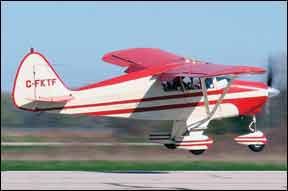There was a time when almost all light airplanes had tailwheels. They were cheaper and lighter to build than nosewheel airplanes and, besides, “we’ve always done it this way,” has always been very powerful in guiding design decisions. In the little airplane world, save for a few non-conformists such as the Ercoupe, Navion and Bonanza, tailwheels ruled.
By the late 1940s, the all-metal Luscombe had been around for 10 years, Beech and Cessna were going all-metal and the Piper Aircraft Corporation was seen to be lagging the field because it was still making its wide range of airplanes of mostly fabric stretched over a wood or metal frame.
Piper had seen the popularity and safety of the few nosewheel airplanes that had been introduced and, needing to find a way to stay in the swim after the great post-war boom went bust, looked at what it could do with what it had. While the company apparently didn’t have the financial horsepower to develop an all-metal airplane quickly, it could convert its four-seat, conventional-gear Pacer to the tricycle-gear configuration, beating out the competing four-place designs from Cessna and Aeronca.
The result, which the company unimaginatively dubbed the Tri-Pacer, was not what one would call an avant-garde looking airplane, even for the early 1950s. Short-coupled, with stubby, strut-braced, high-mounted wings and thick-looking tricycle landing gear, the tube-and-fabric four-seater seems more than a bit dowdy today. The unflattering nicknames bestowed upon it—like Flying Milk Stool, Slow-Pacer and Flying Brick—reflected its silhouette, not how it behaved. Those looks gave way to owners’ delight at the airplane’s pleasing mix of reasonable performance and load-carrying capability combined with low purchase prices and rock-bottom operating costs.
And they’ve got a point. The Tri- Pacer can cruise faster than a vintage Cessna 172 on only seven to nine GPH. It has good short-field performance, a wide CG range and good parts availability to boot. The price for this ranges from about $15,500 up to around $20,000 or so, though a “fixer-upper” can be had for less. That’s a pretty good value, if the prospect of being snickered at while your bank balance stays in the black doesn’t bother you.
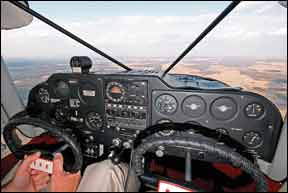
History
In a way, the Tri-Pacer defined a whole new market niche, one eventually dominated by Cessna’s Skyhawk. Introduced for the 1951 model year, Piper’s PA-22-125 Tri-Pacer was based on the PA-20 Pacer, itself only a year old and an upgrade of the earlier Clipper. Because of those roots, it’s possible and popular to convert a Tri-Pacer back to tailwheel configuration with an STC should you wish to increase your chances of tearing it up in a runway loss of control accident. While the tricycle gear PA22 has a lower risk of being rolled into a ball in a crosswind, the PA-20 is, to our eye, more aesthetically pleasing. Amazing what that nose gear can do.
The Tri-Pacer was a great success back in the heady 1950s. During the airplane’s nine-year production run, more than 7600 were built. But in 1956, Cessna decided not to build what was going to be the 170C, put a nosewheel on the prototype and introduced the world-beating 172, which outsold the Tri-Pacer so badly that PA22 production was stopped in 1960.
The first Tri-Pacers had 125-HP Lycoming O-290-D engines, which were changed halfway through the second year of production to 135-HP -D2 models (PA-22-135). In 1955, that engine was swapped out for a 150-HP Lycoming O-320-A1A (PA-22-150). In 1958, the 160-HP O-320-B2A was offered as an option, giving a boost in useful load and changing the model designation to PA-22-160. The latter engine can be retrofitted with an STC; a worthwhile mod at overhaul. From 1958 through 1960, the PA-22-150 Caribbean—a less well-equipped Tri-Pacer—also was offered. Aside from this, there were no significant changes during the Tri-Pacer’s production run. Floats were offered as an option for the PA-22S seaplane version, as were 44-gallon tanks after 1955.
Despite ending Tri-Pacer production in 1960, Piper kept the marque alive with the Colt, which, over-simplified, was a two-place Tri-Pacer built to compete against Cessna’s 150. Powered by a 108 HP Lycoming O-235-C1B, the Colt only saw three years of production, which ended in 1963. Some 1800 PA-22-108 Colts were produced.
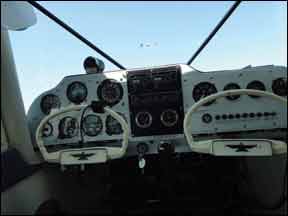
Accommodations
Despite two doors (one on the right front for the front seats, one on the left rear for the back seats), the Tri-Pacer is tough to climb into—perhaps a bit of its tailwheel-conversion heritage showing through. The gear is relatively tall, making for a long climb up, and the doors are small due to the need to clear some of the fuselage tubes.
Once inside, some passengers find the Tri-Pacer cramped and dark. Two wide people sitting side-by-side should be very good friends, at least. As one owner put it several years back, “The Tri-Pacer is built for people who are either small, or who are willing to become good friends, yet we have reports from pilots as tall as 6’5” flying them happily.”
Built to Last
Tri-Pacer construction is fairly sturdy. Steel tubing covered with fabric was the factory standard, and in terms of strength and lightness it does well. But all-metal airplanes soon became the state of the art. As a result, “metalizing” became a popular mod for fabric-covered airplanes like the Tri-Pacer. However, it seems most owners have been able to resist the urge to get their airplanes converted to spam-cans. Most Tri-Pacers are still fabric covered.
The fabric holds up we’ll according to most owners, especially the Ceconite and Razorback coverings. Some might say they last too long, allowing corrosion to progress undetected for a long time. Although Razorback can last more than 20 years, the structure underneath may rot away in only 10. Some owners, opting for safety, get their bird recovered every 10 years, whether it needs it or not.
Even with regular inspections and recovering, the steel-tube structure of the Tri-Pacer is somewhat susceptible to corrosion. One trouble area is the tubing around and under the doors. Another seems to be the tail surfaces, especially the stabilizer. Several owners report finding rust in the lower longerons and tail-section tubing.
The lift struts are another nettlesome component. Internal corrosion is a well-known problem, as is cracking of the strut forks (we’ll discuss these further, shortly). Otherwise, owners report maintenance offers no special problems, and upkeep costs are quite low.
A scan of a six-year printout of FAA Service Difficulty Reports (SDRs) revealed only one report, a loose mixture control end fitting that prevented shutting the engine down with the. A search in 2008 found only one trend, problems with starter cables. Slow cranking, and eventually, burned wires were cited in 10 reports, ranging through all models. Replacement at the first signs of reduced cranking power seems to be the order of the day.
Despite its rather dated looks, the Tri-Pacer is a surprising performer, and earns high marks from owners in this regard. Except for the lower-powered models, most Tri-Pacers can lift three adults, a smidgen of baggage and full fuel—and still manage a decent climb rate. And while stubbiness usually translates into a small loading envelope, owners report that it’s almost impossible to get the CG too far forward or aft. (But it’s quite possible to overload.)
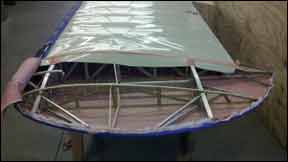
It’s got good short- and soft-field performance, provided the field isn’t too high or hot. But even then, the Tri-Pacer can hack it if the load is kept light, particularly with the higher-horsepower models. One owner told us he uses his Tri-Pacer to routinely fly over 9000-foot mountains in the west, another has his on floats and flies in and out of lakes at elevations to 5000 feet.
Owners report cruise speeds in the 120- to 130-MPH range at middling altitudes (6000 to 7000 feet). This is comparable to a Piper Cherokee or even a Warrior. Maximum altitude is also very good, with climb performance petering out at about 13,000 feet as engine power bleeds away.
The low-power models are another story, though. Don’t expect to carry four people and more than an hour of fuel, because the airplane may not make it off the ground. The low-power models can make fine Sunday fliers, but don’t consider them as cross-country, load-toting machines.
Landing can be a challenging, although easier than its tailwheel predecessors, judging by the aircraft’s accident history. The Tri-Pacer’s stubby wings mean getting slow on final can produce prodigious sink rates (as high as 2000 FPM, according to one owner). This may be why the Tri-Pacer has a reputation for gliding like the proverbial brick. To those who aren’t familiar with the airplane, the insidious onset of a high sink rate on final can be unnerving (and lead to undershooting the runway). A key is to nail the speed (68-70 MPH) and carry power. As one owner notes, “You pull the power back, and she lands.”
Once the airplane is on the runway, the short fuselage and narrow landing gear can make for somewhat nervous manners. Swerves that are mild in other airplanes may not be in a Tri-Pacer. Hand-operated brakes don’t help here, either. This leads to one of the Tri-Pacer’s few problems—ground handling.
Strong winds can be a real hazard for this airplane. Its stance on the ground and its high wing are almost an invitation to get blown over. Fast turns can spell embarrassment, as can turns from a headwind into a crosswind. Make a sharp, snappy turn off the runway with a strong wind, and remaining upright can be a real challenge.
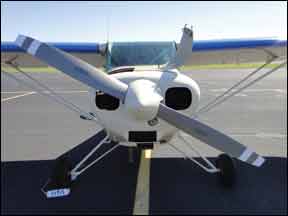
Proper aileron deflection when taxiing in wind is a must. But once it’s off the ground, the Tri-Pacer can be a delight to fly. Controls are we’ll harmonized, and an aileron-rudder interconnect gives the pilot the choice of making turns with feet off the rudder or hands off the yoke. Pilots report the interconnect is easy to overpower for slips.
While it’s close-coupled, the Tri-Pacer is surprisingly stable, perhaps because of the stubby wings resulting in a relatively higher wing loading when compared to other types. Although it will bounce around in turbulence, it doesn’t wander or hunt up and down. It won’t fly hands-off, but it won’t try to swap ends, either.
Another surprise is stall behavior. Many pilots report that the Tri-Pacer won’t stall in the classic sense. Haul back on the yoke and the nose comes up, the airspeed goes down and the airplane soon starts to sink. But it never breaks or pitches over—it just sinks. However, “correctly” mishandled, the Tri-Pacer can raise the adrenaline of even hardened pilots. It definitely will stall and spin if not flown properly.
The brief production run of the two-place Colt means it is not we’ll known despite its impressive performance. Using most of the Tri-Pacer airframe, the flapless Colt, on 108 HP, has an endurance of nearly six hours, a gigantic baggage area and can carry 494 pounds in the cabin with full fuel. Handling is otherwise the same as the Tri-Pacer, but owners report it to be even easier to make consistent, roll-it-on landings. While a Cessna 150 is five or so knots faster, nothing in the two-place market comes close to the payload and endurance capabilities of the Colt.
AD Scene
Considering its age, the Tri-Pacer has fared very we’ll in terms of ADs. Most were of the one-time sort and should have been complied with long ago. There have not been any that apply to the airframe issued since 1999.
There is a significant AD on the wing struts, AD 99-01-05, which supersedes AD 93-10-06 (which itself once was two ADs, 77-03-08 and 81-25-05).
Part of the AD calls for inspecting the struts for corrosion and dents every 24 months, as we’ll as treating them with a corrosion inhibitor. The other part of the AD addresses the lift-strut forks. According to the AD, the original machined-thread forks were prone to fatigue cracking.
The fatigue apparently originated at the bottom of the thread grooves, which were sharp. The problem was exacerbated by people using the struts as steps when ingressing and egressing.
The AD calls for immediate inspection of the forks using “magnetic particle procedures” to detect cracks every 500 hours. If no cracks were found, then the forks could be returned to service if they had less than 2000 hours on them (1000 hours for floatplanes or any plane that had been on floats at any time in its life).
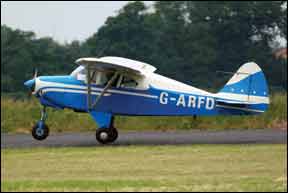
But at 2000 hours (or 1000), the forks have to be replaced with rolled-thread types using parts available from Piper or other vendors and installed under an STC. Applying an STC for installation of aftermarket struts and/or fork terminates that portion of the AD. Also, a “no-step” placard must be installed. Buyers shopping for a Tri-Pacer and finding one advertised as low time should make sure the AD has been complied with or the forks replaced.
Resale Value
These days, along with the rest of the fleet, prices are relatively flat, with $15-20,000 being the high/low range for the various Tri-Pacer models, same as it was several years ago. Nevertheless, the plane is still a relative bargain, given its capabilities. At those prices, it’s about the cheapest four-seat around.
For example, a 1958 PA-22-150 was selling for $6750 back in 1978. Today, that same airplane is worth about $19,000. On the face of it, the airplane has more than doubled in value. But when inflation is taken into account, it’s about $3000 short of keeping up. That’s still not bad in the current aviation market.
Buyer Points
Besides all the usual items buyers should look for, the Tri-Pacer has some peculiarities to be aware of. However, any mechanic worth his or her hourly rate (and familiar with the airplane) should catch most of them.
Of course, the airplane’s AD compliance history should be carefully examined. While few of the airplane’s ADs have been really serious, there are at least three that are genuine safety-of-flight items. Besides the aforementioned strut ADs, the third important one calls for reinforcement of the fabric over the windscreen.
In several accidents, the fabric became loose and lifted up. The ballooning fabric acts like a big air scoop and spoiler, creating incredible drag and destroying airflow over the tail surfaces. This can make control just about impossible, and level flight out of the question.
The age and overall condition of the fabric is another consideration. A fresh covering job may indicate an attempt to cover up expensive structural problems (like rusted tubing). On the other hand, fabric that’s more than 10 years old could be doing the same.
The Tri-Pacer is no stranger to brake failures, so a careful check of the condition and history of the brakes is in order. Considering that the brakes are operated by a single hand lever (pressurizing two separate master cylinders), failure can make for some dramatic moments during landing.
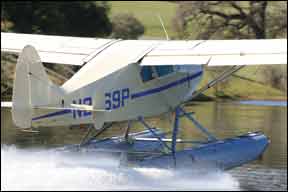
Look for recent (i.e., within the last 10 years) replacement of the diaphragms and drum turning to ensure long-lasting, reliable brakes. Another item to look for is half-inch exhaust valves in the O-320 engines. With the valves, TBO is a healthy 2000 hours. Without, it’s only 1200. The Colt’s 108-HP engine comes with a whopping 2400-hour TBO.
Mods, Organizations
There are mods a-plenty for the Tri-Pacer. Owners can get everything from the mundane to the radical for their airplane. One worth looking into gets rid of the old drum-type brakes and installs disk brakes. Another adds toe brakes. If a prospective purchase still has drum brakes, a buyer might want to look into Univair’s brake STC.
Some owners are turning their Tri-Pacers back into Pacers by removing the nose gear and moving the mains forward. It improves the airplane’s looks considerably, but brings with it tailwheel ground handling foibles. Univair also holds an STC for this.
Perhaps the best mod is a simple engine swap, from the increasingly rare O-290 to the quite-common Lycoming O-320, or even a 180-HP O-360.
Available Tri-Pacer STCs also include operation on automobile gasoline, replacing the fabric covering with metal skins, wing-tip extensions, skis, shoulder harnesses and tundra tires, along with the usual avionics and instrumentation upgrades.
Owners we’ve heard from almost universally noted Univair as their main source of parts. In addition to holding several STCs (including one to replace the wing ribs with stamped aluminum ones), Univair stocks many hard-to-get parts. Availability has not proven to be a problem.
That’s a key consideration in an airplane this old. Membership in the Short Wing Piper Club (www.shortwing.org) is a must for Tri-Pacer (and other early Piper) owners. As a source of current news, maintenance tips and owner information, the club can’t be beat.
Owner Comments
Embarrassingly easy to fly and afford, the Tri-Pacer is quite possibly the best bang for the buck. I say that not just because I own and fly one, but the numbers speak for themselves. More importantly, I am not a rich man. For a 150 HP Tri-Pacer such as mine, at gross weight and standard temperature cruise is 113 knots, it stalls with full flaps at 43 knots, has a takeoff ground roll of 1120 feet and rate of climb of 750 FPM. Mine has the optional eight gallon aux tank, giving 44 total gallons of fuel. It burns 8.5 to 9 GPH.
Insurance runs me $550 per year. I budget $550 per month, which covers absolutely everything, from hangar through fuel, insurance and maintenance.
As for mods, if you plan to fly at night, consider converting from a generator to an alternator. There are many STCs for the changeover to disk brakes. Sealed lift struts eliminate an expensive inspection AD. Bogart battery cables made of heavier gauge copper wire than the original help with starting. I’ve also gotten the Mogas STC and installed LED landing and taxi lights.
Most importantly, if you are going to own one get a thorough prebuy by a knowledgeable A & P, check for corrosion in the tubing and keep it in a hangar. I can’t emphasize hangaring a Tri-Pacer too much.
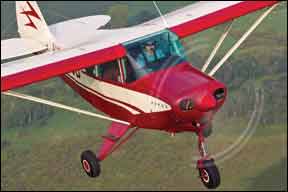
They are about as honest to fly as an altar boy on Sunday. You have to remember a few things: Power off and flaps down they sink like a brick, attached to a piano, chained to an anvil. So you must carry a fair amount of energy into the flare or you will be unable to arrest the descent.
That issue has bent more than one Pacer and Tri-Pacer. Use the left tank for takeoff, landing and aggressive maneuvering. It has to do with how the fuel line is routed. There are numerous STCs that fix that issue. One is to reroute the fuel line, the other is swapping out the tank selector to one that has left-right-both positions. Trimmer Aviation has the STCs for that and many more for Tri-Pacers.
John Garrison
Via Email
My father and I completed a complete restoration of a Tri-Pacer that won a Bronze Lindy at Oshkosh two years ago. It was featured in the May 2011 issue of Sport Aviation. I think the biggest attractions of the Tri-Pacer are its low selling price, exceptionally low cost maintenance and simplicity. That’s not to mention that it takes up less hangar space than many other aircraft. From a maintenance standpoint, sealed lift struts and founded tail brace wires get rid of two repetitive ADs. Most of the other repetitive ADs can be eliminated by changing a few components.
Most Tri-Pacers are a great two-person airplane, meaning you can take all the baggage you can fit—which is a lot of stuff—or a decent three-person airplane. It can fit four fairly small people and no baggage. The fuel economy and cruise speed make it a great all-around airplane, whether you want to putt around for an evening flight or you want to fly cross country.
I did all of my flight training in our Tri-Pacer and can attest that it is a very good trainer and very simple to fly. I think the way to learn to fly nowadays is to buy a Tri-Pacer with a partner or two, and take your lessons in it. It holds its value, making it cheaper than renting.
Zac Weidner
Via Email
My Tri-Pacer had been previously owned by Carroll Shelby of racing fame. It had been converted to a tailwheel before he bought it. I bought it to put on floats. Prior to doing so I found it a great cross-country plan as I am 6’5” tall. I had plenty of leg room. It was a little busy as a tailwheel airplane. I would probably prefer to keep it as a tricycle gear if it weren’t on floats.
Once on floats, I put on a McCauley climb prop per a Svenn’s Aviation STC. The lower cruise speed with that prop and the floats ran oil temps up, so I installed an aft-mounted oil cooler with bigger capacity per Dan Stewart’s STC. It saved a few pounds and streamlined the nose bowl. Aircraft Innovations LLC wing tip extensions and Micro Aerodynamics Vortex Generators made climb performance more like a Super Cub.
Trimmer Aviation in Alaska has some great STC door mods as we’ll as a fuel selector replacement that eliminates the 100-hour requirement to rebuild the fuel selector.
I do seaplane training in the Sierra Nevadas out of San Andreas, California, and routinely fly into lakes at elevations as high as 5000 feet. I fly it off of a 2000-foot long pond on 105-degree days with two people and 20 gallons of fuel with no problem.
Before floats, it burned 6 GPH at 2300 RPM and cruised at 120 MPH; now it burns 7 GPH at 2400 RPM and cruises at 80 MPH, still a good deal.
I looked at three airplanes before I found one in the condition I wanted. I recommend a careful prepurchase inspection with particular attention to fabric condition and mods installed. It’s cheaper to buy one with the mods than to put them on later. I would highly recommend that someone with a limited budget, wanting a rock-solid, easy-to-fly aircraft with low maintenance, buy a Tri-Pacer.
Jim McCloud
Foothill Aviation
I always wanted my own plane from the time I was a kid. Finally I could afford one. I always liked the Tri-Pacer but had never been in one; I just liked the looks! I bought one in June 2007, a 1959 150 with about 2500 hours on the airframe, 500 SMOH on the engine and the original drum brakes.
She’s a sweetheart, handling better than the 172s I’m used to. The Tri-Pacer is faster and will carry more weight than a comparable 172. The only point that rang true from the stories was landing.
You have to fly a Tri-Pacer on, then plant the nose gear. If you try to flare like 172, those short wings just give up and you’d better have the hook down and hope you get the three wire, because that thing is coming down right now. I did some pretty good carrier landings getting used to its habits. The Tri-Pacer will bounce real good on grass as we’ll as pavement!
I lost my first PA-22 in a too-long, too-fast approach in a gusty crosswind on my 1700-foot, downhill airport and put her on her back in a plowed corn field. She has been replaced by a 1957 PA-22-150.
Bill Cameron
West Houston, Texas

